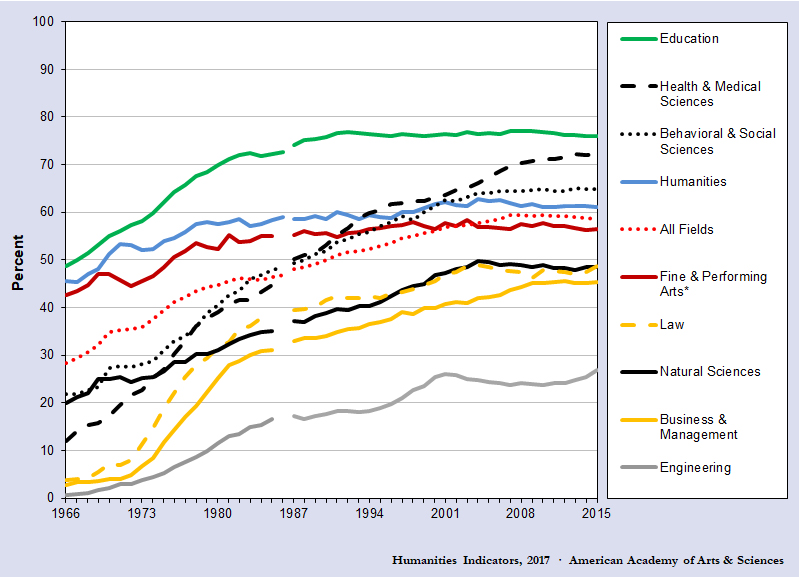II-26a: Percentage of Master’s and Professional-Practice Degrees Awarded to Women, Selected Academic Fields, 1966–2015

* For years 1966–1986, the National Science Foundation academic field category of “Arts and Music” is the basis for the count of “Fine and Performing Arts” degrees depicted here. This category includes the academic study of the arts (e.g., art history and film studies), which encompasses disciplines considered by the Humanities Indicators to be part of the humanities field. For years 1987–2015, the categorization of degrees by the finer-grained Classification of Instructional Programs makes possible the removal of such degrees from the count for “Fine and Performing Arts” and their inclusion among humanities degrees. Please see the Note on the Data Used to Calculate Humanities Degree Counts and Shares for further explanation of the break in the trend line for this field and others.
Source: Office of Education/U.S. Department of Education, Survey of Earned Degrees, Higher Education General Information System (HEGIS), and Integrated Postsecondary Data System (IPEDS). HEGIS and IPEDS data were accessed via the National Science Foundation’s online data system, WebCASPAR. Data analyzed and presented by the American Academy of Arts and Sciences’ Humanities Indicators (www.humanitiesindicators.org).
Please see the Note on the Data Used to Calculate Humanities Degree Counts and Shares for an explanation of the differences between the National Science Foundation academic discipline classification and the Classification of Instructional Programs. See the Degree Program Code Catalog for a description of the types of degrees counted as humanities degrees under each classification system. Also see Note on the Definition of Advanced Degrees.

